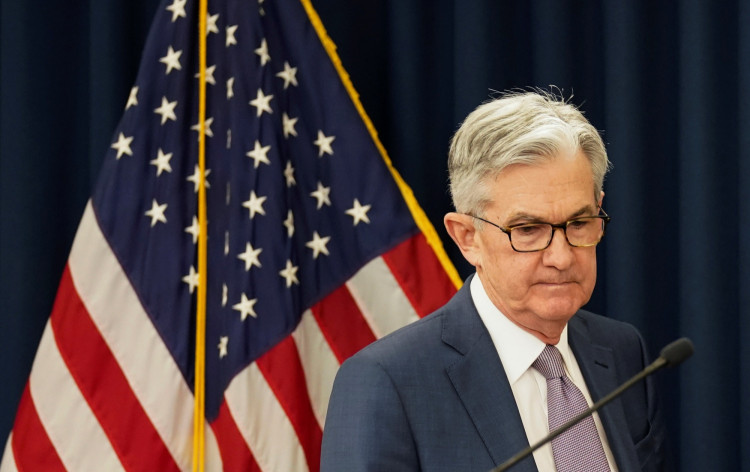The Federal Reserve raised interest rates by 25 basis points as expected on July 26, setting the benchmark interest rate range at 5.25% to 5.5%, a record high since January 2001. The market's forecast of another rate hike by year's end stood at only 38%, suggesting that July could mark the final increase of this cycle.
Market observers eagerly awaited Federal Reserve Chairman Jerome Powell's press conference at 2:30 p.m. Eastern Time, looking for hints about the future path of interest rates. Some analysts suggested that if Powell reiterated that monetary policy "will depend on the economic data," this could indicate that the rate hike cycle has not yet concluded.
After the Fed's decision was announced, the markets showed little change, perhaps due to the fact that the rate hike had already been fully priced in:
- U.S. stock indices were little changed, with the Dow Jones maintaining slight gains while the S&P 500 and the NASDAQ fell 0.2% and 0.4%, respectively.
- Two-year Treasury yields turned from gains to losses, falling below 4.90%. Ten-year bond yields remained down by three basis points, trading at 3.89%.
- The U.S. Dollar Index (DXY) slightly extended its losses to 0.2%, falling below 101.20, but remained close to a two-week high. Spot gold slightly increased its gains to 0.3%, climbing above $1,970 per ounce.
Ahead of Powell's press conference, the Dow expanded its gains slightly to 0.1%, while the S&P 500 and NASDAQ narrowed their losses. Two-year bond yields rebounded almost three basis points to 4.92%, hitting a daily high, while ten-year bond yield losses further narrowed to just over one basis point. The U.S. Dollar Index narrowed its loss to less than 0.1%, edging close to 101.30. Spot gold returns slipped back to 0.2%, losing hold of $1,970 per ounce.
During his press conference, Powell reiterated his "strong commitment to achieving a 2% inflation target," stating that future rate hikes would still depend on data, noting signs of a recovery in the housing sector although it still lags behind 2022 levels, and indicating continued signs of labor supply and demand approaching balance.
In the question-and-answer session, he suggested that the Fed might hike rates again in September "if data allows," and highlighted that "the good news is, inflation has significantly declined."
Following the start of the press conference, U.S. stocks uniformly turned to gains, bond yields fell further, and the dollar slipped below the 101 mark:
- The Dow Jones increased its gains to 0.5%, while the S&P 500 and NASDAQ turned to gains.
- Two-year Treasury yields erased earlier gains and fell back below 4.90%, losing three basis points. Ten-year bond yields expanded their losses to five basis points.
- The U.S. Dollar Index (DXY) expanded its losses to 0.4%, slipping below the 101 mark. Spot gold increased its gains to 0.6%, climbing back above $1,970 per ounce and hitting a daily high.
Before the Fed decision, the Dow narrowly turned to gains, the dollar and long-term bond yields collectively fell, while short-term bond yields and gold rose:
- The Dow briefly erased a gain of over 68 points to fall but turned to gains again five minutes before the announcement. The S&P 500 returned to its daily low, falling by 0.3%. Earlier, U.S. stocks opened lower, with the Dow falling nearly 100 points at the opening but turned to gains an hour later. The tech-heavy NASDAQ hit a daily low and was down as much as 0.7% before the midday, later falling by 0.5%. The Russell small-cap stocks outperformed major indices throughout the day.
- Yields on short-term bonds stopped falling. The more sensitive two-year yields turned to gains exceeding one basis point after midday, climbing above 4.90% to a daily high, while the ten-year bond yields, after a six basis points drop, saw its losses halved to below 3.90%, both hovering around two-week highs.
- The U.S. Dollar Index (DXY), which measures the dollar against a basket of six major currencies, turned from gains to losses but remained above the 101 mark, although it halted a six-day rally but hovered around its two-week high since July 11. A week ago, it fell below 100 to a 15-month low.
- Spot gold climbed as high as $10, or 0.5%, once rising above the $1,970 mark to its intraday high since July 20, then its gains narrowed to 0.2%. JPMorgan Chase suggested that as the Fed cuts interest rates, gold prices may reach a new historic high next year.






